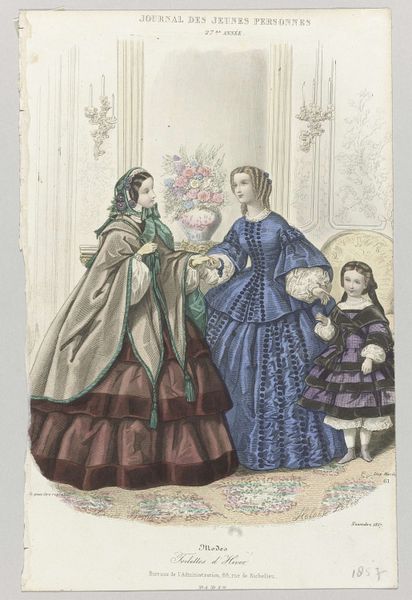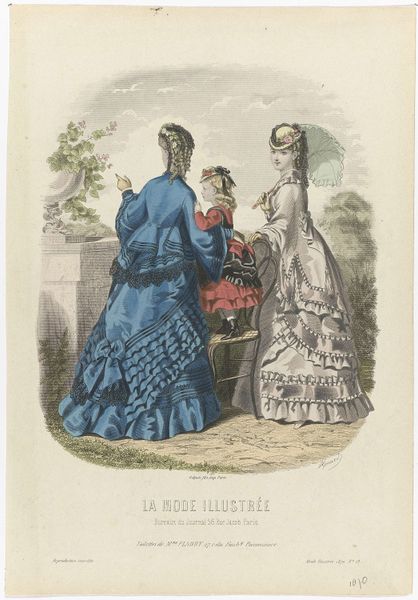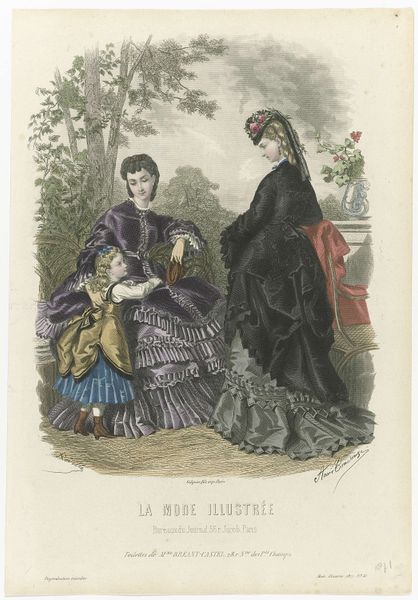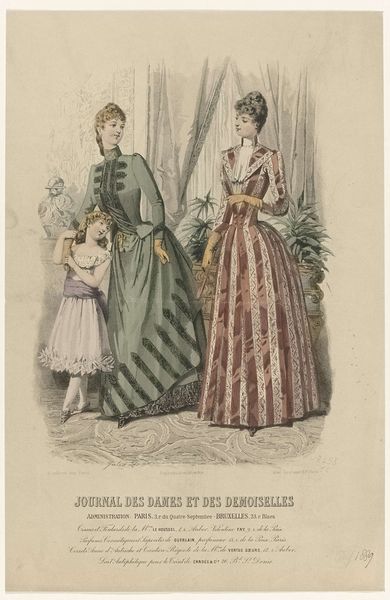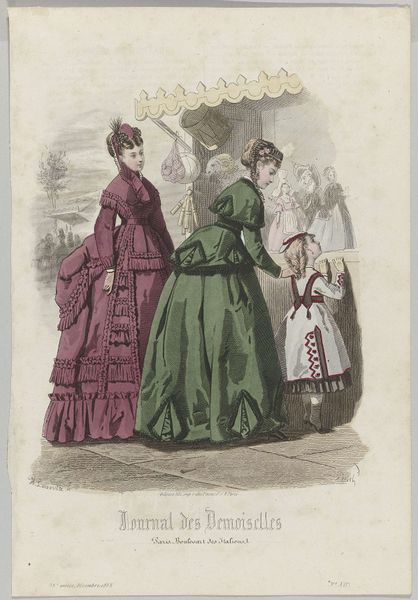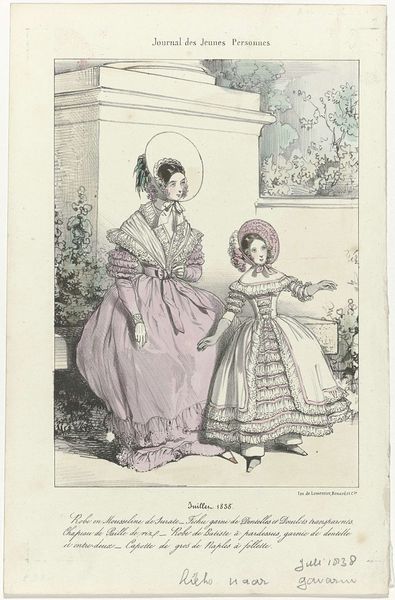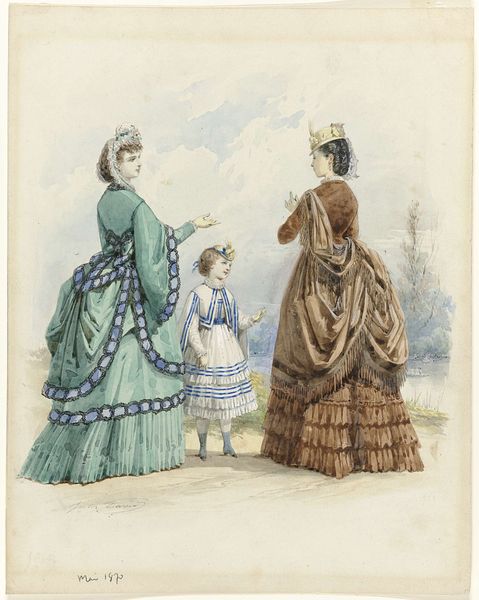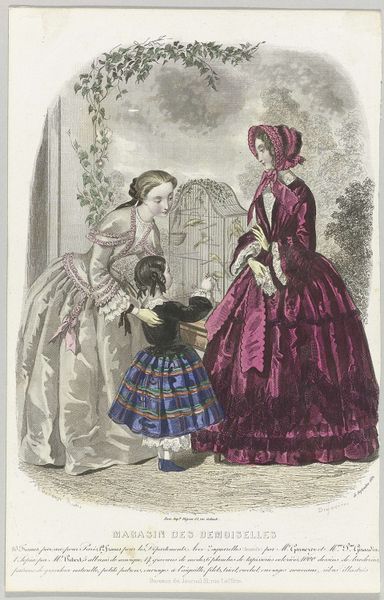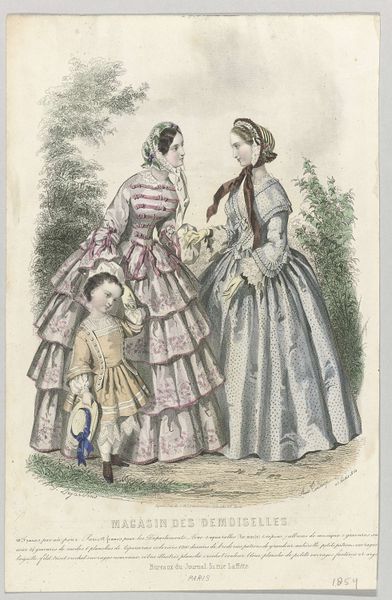
graphic-art, print, engraving
#
graphic-art
# print
#
genre-painting
#
engraving
Dimensions: height 265 mm, width 180 mm
Copyright: Rijks Museum: Open Domain
Curator: I find the lithographic engraving "Journal des Demoiselles, août 1863," quite striking. Created anonymously, this print showcases the height of 19th-century French fashion. What are your initial impressions? Editor: Elegance with constraint. The color palette is restrained, the postures controlled. Yet, beneath the surface, I sense aspirations towards freedom, reflected in the landscape background, and the implied movement of the figures. Curator: Absolutely. "Journal des Demoiselles" wasn't simply displaying dresses. It was a cultural artifact reinforcing societal expectations. Note how the young girl is presented. It speaks to gendered roles and familial expectations in that era, her clothing miniaturizing the adults. Editor: It is telling, how clothing can encode messages about status and respectability. Take the fabrics and styles of the two older women – a clear emphasis on visual markers of success, class and taste communicated through engravings in print. What do those bonnet-style headdresses recall for you? The women look so austere in them. Curator: This journal served as a visual script dictating bourgeois respectability, one which enforced a narrative where women and children performed assigned roles. The very act of representing these women in fashionable attire cemented their identity within specific societal frameworks. It also provided employment opportunities for women as the journals needed to be printed, and circulated among seamstresses. Editor: Fashion has consistently been tied to cultural identity. The parasols and hats of that era – objects holding multifaceted meanings, communicating not just style but cultural and psychological themes around privacy, gender and identity. The clothing signifies an ideal type of woman that has evolved since that era. Curator: The composition, although seemingly simple, underscores the power dynamics. One could delve into the restricted agency within these representations. Are they truly free to simply stand there and garden, or is it a highly prescribed performance? Editor: The layering of visual information speaks volumes, prompting discussions that intersect philosophy, cultural studies, and feminist theory when exploring such works. Even today we engage in similar performances through our style choices, as that practice continues. Curator: It becomes evident that even what seems like a charming illustration, like this fashion plate, serves as a site for decoding cultural power. Editor: Exactly. A small print opens avenues into understanding so much about the symbols, behaviors, and expectations woven into the cultural fabric of the 19th century.
Comments
No comments
Be the first to comment and join the conversation on the ultimate creative platform.
